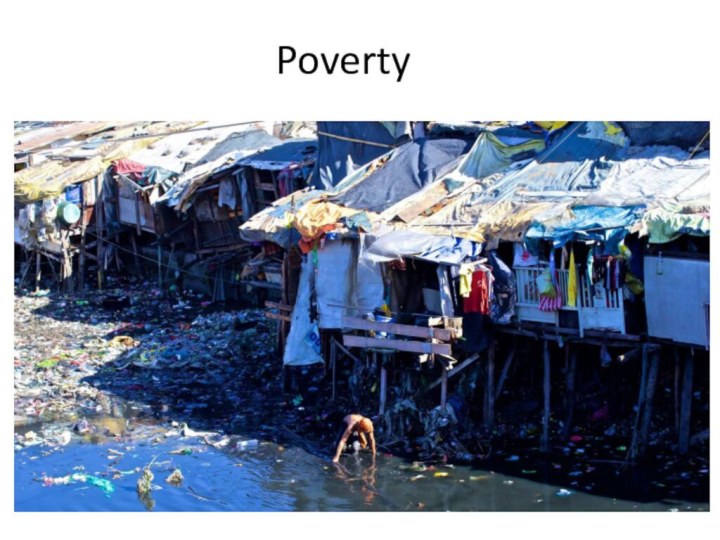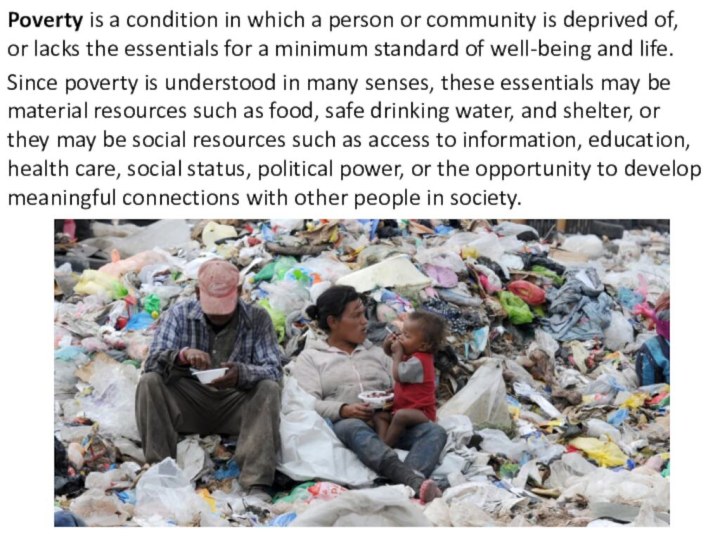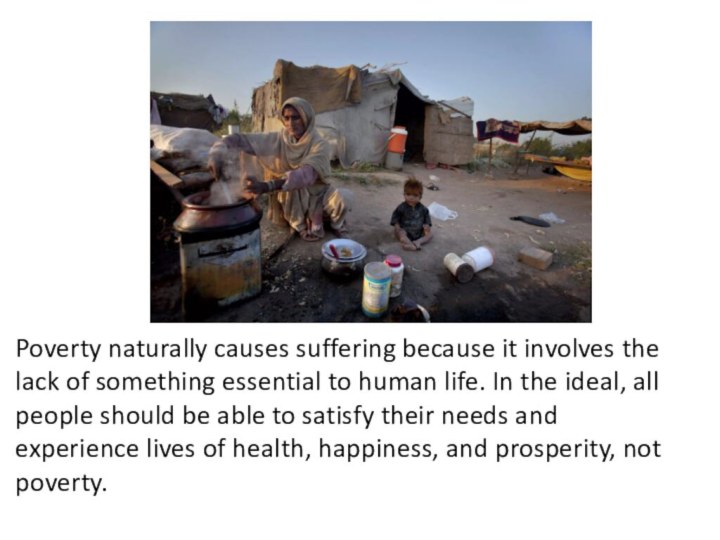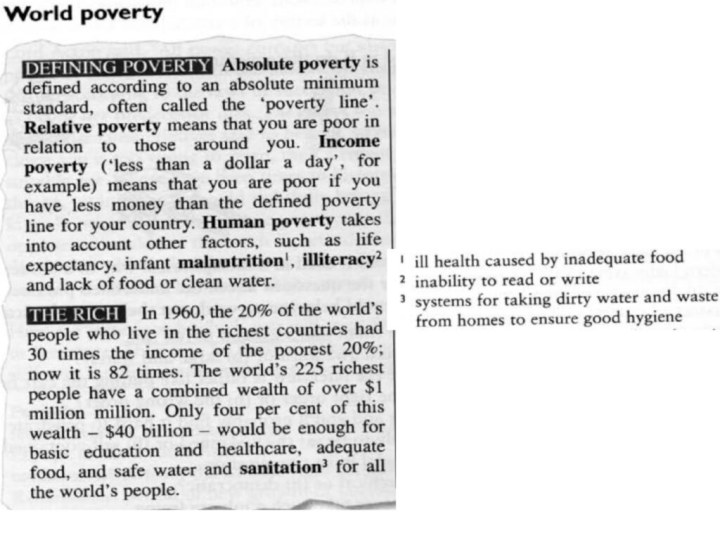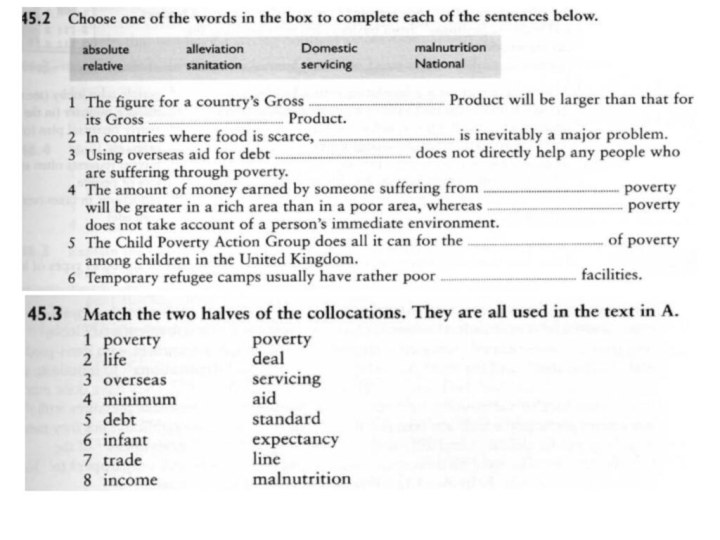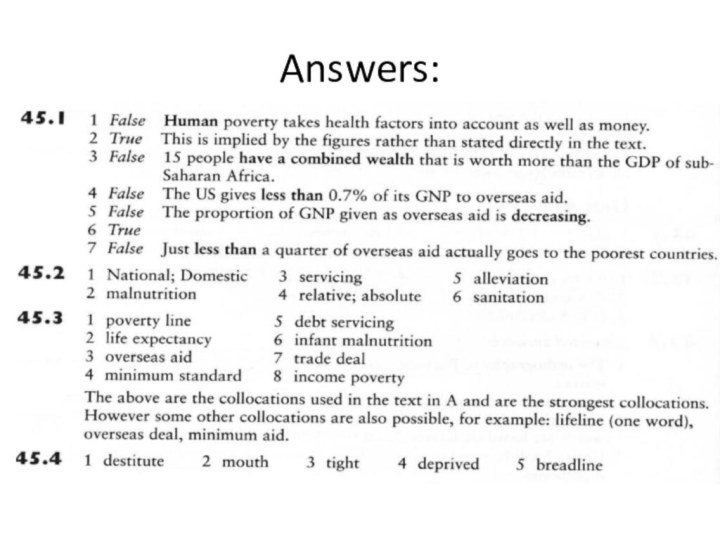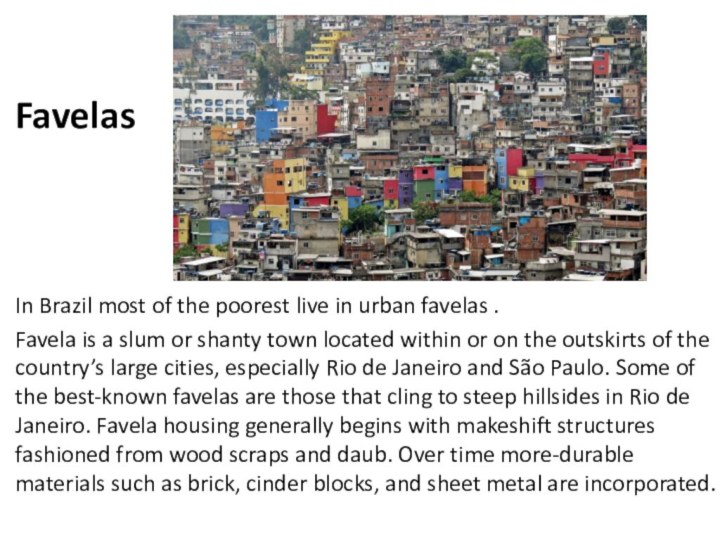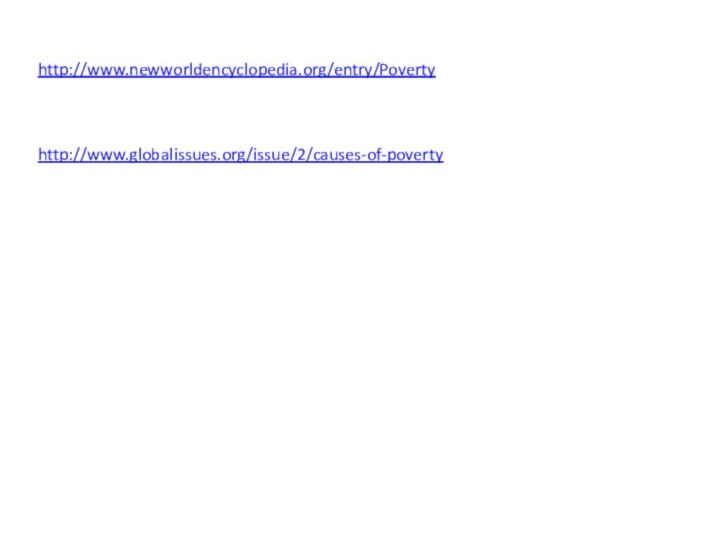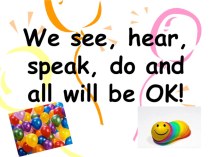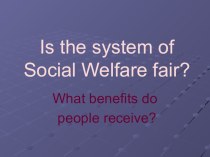Слайд 2
Poverty is a condition in which a person
or community is deprived of, or lacks the essentials
for a minimum standard of well-being and life.
Since poverty is understood in many senses, these essentials may be material resources such as food, safe drinking water, and shelter, or they may be social resources such as access to information, education, health care, social status, political power, or the opportunity to develop meaningful connections with other people in society.
Слайд 3
Poverty naturally causes suffering because it involves the
lack of something essential to human life. In the
ideal, all people should be able to satisfy their needs and experience lives of health, happiness, and prosperity, not poverty.
Слайд 4
Absolute poverty, extreme poverty, or destitution refers to
the complete lack of the means necessary to meet
basic personal needs such as food, clothing and shelter.
The threshold at which absolute poverty is defined is considered to be about the same, independent of the person's permanent location or era.
On the other hand, relative poverty occurs when a person who lives in a given country does not enjoy a certain minimum level of "living standards" as compared to the rest of the population of that country.
Therefore, the threshold at which relative poverty is defined varies from country to another, or from one society to another.
Слайд 5
Providing basic needs can be restricted by constraints
on government's ability to deliver services, such as corruption,
tax avoidance, debt and by the brain drain of health care and educational professionals.
Strategies of increasing income to make basic needs more affordable typically include welfare, economic freedoms and providing financial services.
Poverty reduction is still a major issue (or a target) for many international organizations such as the United Nations, the World Bank, United States Agency for International Development, Oxfam, CARE, World Vision International, the Bill and Melinda Gates Foundation, the Red Cross and others.
Слайд 12
Favelas
In Brazil most of the poorest live in
urban favelas .
Favela is a slum or shanty
town located within or on the outskirts of the country’s large cities, especially Rio de Janeiro and São Paulo. Some of the best-known favelas are those that cling to steep hillsides in Rio de Janeiro. Favela housing generally begins with makeshift structures fashioned from wood scraps and daub. Over time more-durable materials such as brick, cinder blocks, and sheet metal are incorporated.
Слайд 13
Shanty towns
Shanty towns are slums on the outskirts
of many cities – especially in third world countries.
Normally there are not many shanty towns in more economically developed countries. Often of low cost, with houses badly built with plywood, corrugated metal, sheets of plastic, cardboard or any available material. Often irregular structures good enough to keep the rain away or to protect from the summer sun. Pets and animals are often left to roam for food and water.
Lack of clean water, sanitation and toilets often make people, especially children, more exposed to illnesses such as hepatitis and cholera.
